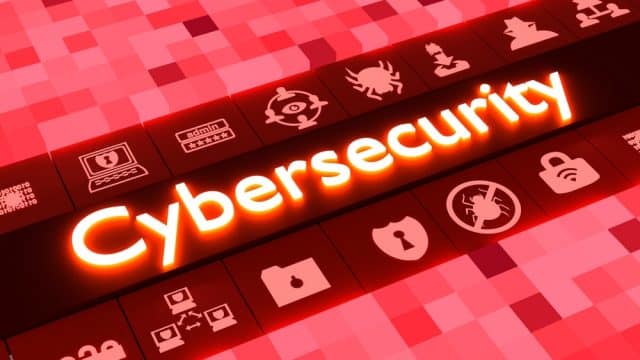[ad_1]

In the fast-evolving digital landscape, the prevalence of cyber threats has become a stark reality for businesses and individuals. While essential, conventional cybersecurity measures are often reactive and inadequate against sophisticated attacks. This is where Cyber Threat Intelligence (CTI) emerges as a proactive and complementary approach to cybersecurity.
Utilizing CTI helps organizations to protect their systems from potential hazards. It provides a way to cut through the noise and focus on threats relevant to that specific company and industry. However, CTI is more than just a product. It’s a program that needs to be evaluated constantly to ensure the correct tools, processes, and people are being leveraged as threats evolve and the company changes over time.
What is CTI’s role in mitigating cyber attacks?
The genesis of CTI, or intelligence in general, is to understand your adversaries better and get ahead of them, ultimately thwarting their attacks. This sounds simple enough, and if there were a product that just did that, it would be installed in every enterprise across the globe. However, there is no magic product that a company can purchase.
There are plenty of great sources for cyber threat data, both commercial and open source, but for it to be considered intelligence that is genuinely valuable to the cybersecurity team, some additional work is needed. Teams need to know whether the threats revealed by the data are actually relevant to their business, otherwise they can spend time they don’t have addressing risks that aren’t relevant, while potentially missing those that are a genuine threat. For that they need context, followed by the capability to prioritize which threats pose the greatest risk and should be most urgently addressed. This is the basic application of CTI but, used to its full potential, it can go further, helping companies be more proactive in tackling threats.
Threat hunting: A proactive approach against cyber threats.
Threat hunting is one of the most effective ways to implement CTI. It takes the output of threat intelligence to find threats within an organization that may evade traditional security measures. Threat hunting involves actively searching for advanced threats and malicious activities within an organization’s network. Unlike traditional cybersecurity measures that rely on pre-configured rules and signatures, Threat hunting leverages human intelligence, data analytics, and cutting-edge tools, including automation, to identify and neutralize potential threats before they inflict damage. However, it has its own principles that must be followed to be successful:
- Threat hunting is not a one-off process; instead, it is an ongoing activity that requires continuous monitoring of networks, systems, and endpoints. It involves scrutinizing vast amounts of data to identify subtle anomalies that may indicate a potential security breach.
- It is essential to be mindful that threat hunting is not a random search, but an approach grounded in informed hypotheses. Experienced threat hunters develop theories about possible threats based on threat intelligence, past incidents, and an understanding of their organization’s vulnerabilities. While technology plays a vital role in threat detection, the human element is irreplaceable in threat hunting. Skilled cybersecurity analysts possess the intuition and creativity to spot unusual patterns that automated systems might miss.
- By following the aforementioned threat hunting principles, organizations will be able to realize tremendous benefits, starting with early detection of threats. Organizations can identify and contain potential breaches before they escalate into full-scale cyber-attacks by proactively seeking out threats. This can lead to improved incident response time, enabling security teams to respond rapidly and effectively to emerging threats, minimizing the damage and reducing downtime. In addition, organizations can build customized defenses to the specific risks unique to their environment, enhancing overall resilience against targeted attacks.
- Every threat hunting expedition generates valuable insights that can be used to refine existing security measures and enhance future threat hunting efforts.
CTI and threat hunting are becoming indispensable practices
Cyber Threat Intelligence has matured from a trade that was only understood by a few to what is quickly becoming a profession with proper standardization, and now it is becoming an essential layer in companies’ cyber security strategies. It presents an effective approach to cybersecurity; however, it comes with its own set of challenges. Building a skilled CTI team, starting a threat hunting program, managing an abundance of data, and avoiding false positives are some common hurdles. Cross-team collaboration is also critical – there must be bi-directional information flows that allow the intelligence team to further refine their work by incorporating feedback provided by those “in the trenches” such as the Security Operations Center and Vulnerability Management Team.
However, as cyber threats continue to proliferate, organizations must adopt a proactive approach to cybersecurity. CTI and threat hunting are indispensable practices in the modern cybersecurity landscape, empowering organizations to stay one step ahead of cyber adversaries. By embracing the principles of continuous monitoring with the help of automation, hypothesis-driven analysis, and human expertise, businesses can unleash the true potential of CTI and threat hunting to safeguard their digital assets with confidence.
Image credit: BeeBright/depositphotos.com
Chris Jacob is Global Vice President of Threat Intelligence Engineering, ThreatQuotient.
[ad_2]
Source link
